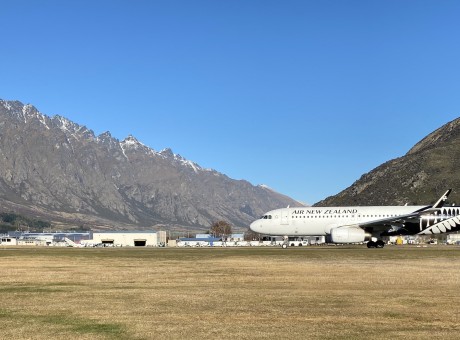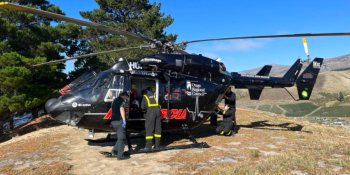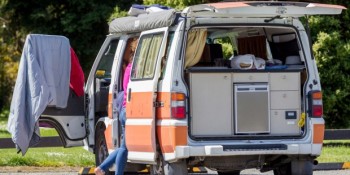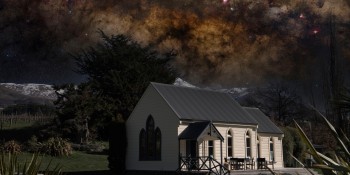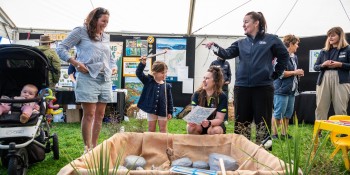Paywall removed: Court orders QLDC to fix Shotover sewage plant
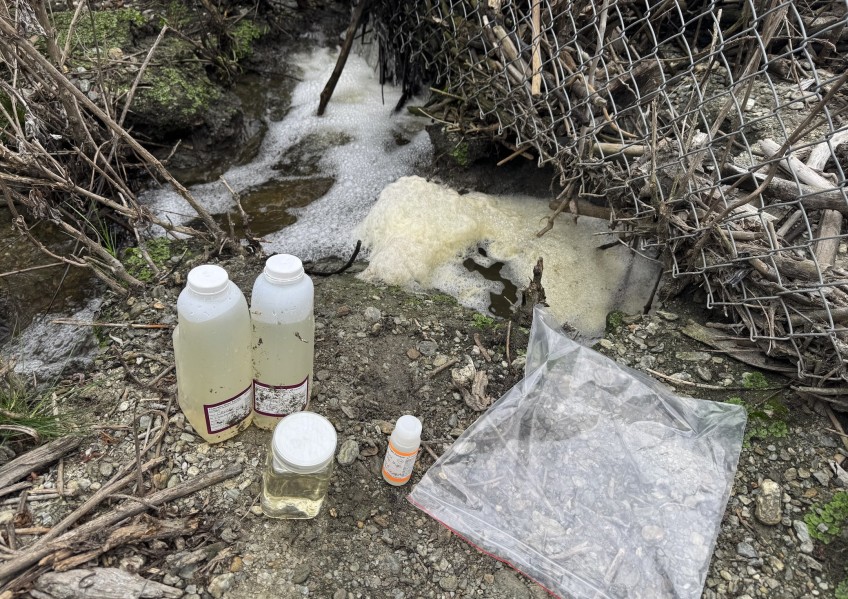
In an Environment Court decision released yesterday Judge John Hassan has granted a wide-ranging sewage enforcement order against the Queenstown Lakes District Council.
The application for the enforcement order was lodged earlier this year by the Otago Regional Council following multiple failures over an extended period at the QLDC’s Shotover wastewater plant.
Crux first broke news of the council’s illegal discharge of partially treated effluent into local rivers in November 2024 with the QLDC’s CEO Mike Theelen denying our reports and saying Crux had a “scant regard for the truth” in our sewage coverage. The council funded local newspaper the Mountain Scene also ignored the sewage crisis for months.
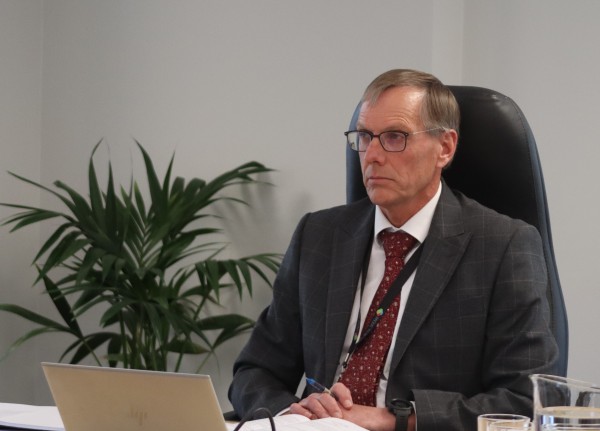
-
QLDC CEO Mike Theelen. Denied the existence of the sewage crisis and accused Crux of having “scant regard for the truth.”
The QLDC secretly funded and built an $800,000 earth wall and discharge pipe in 2024. The wall failed within weeks and neither the wall or discharge pipe had resource consent from the ORC as regulator. The purpose of both the wall and the discharge pipe was to conceal the failure of the Shotover plant from the community.

-
The QLDC’s Tony Avery and Simon Mason announcing the use of Emergency Powers to discharge sewage into local rivers earlier this year. Mr Avery spent close to $800,000 of ratepayer money on an illegal earth wall that collapsed within weeks in a failed attempt to hide the crisis from the community.
Now the Environment Court has issued multiple measures that the QLDC must take to fix the sewage plant and discharge into local rivers.
In a statement to the Court the QLDC’s infrastructure manager Simon Mason says:
“QLDC are committed to delivering the best available short-term solution practically achievable in the circumstances while advancing further plant upgrades and its long-term consent.
“QLDC acknowledges the urgency of remedying the status quo situation and its effects.
“By instigating emergency works QLDC now needs to seek resource consents under s330A of the RMA.
“QLDC also realises that it has to do better, and the funding has been committed to enable an enduring and sustainable long-term outcome to be achieved.”
“Through seeking the (Enforcement) Orders ORC has initiated a process which the parties, by working together, have used to significantly advance the consideration of, planning for and the delivery of both the short-term and long-term outcomes to address the effects of the discharge of treated wastewater beyond the SWWTP (Shotover) site.”
Judge Hassan included in his decision today a full list of all actions required from the QLDC. We publish that full list below.
“On the basis of all the information provided to me, including the affidavit of Mr Mason, I accept the joint assurances made in the memoranda of counsel on behalf of QLDC, ORC and QAC (Queenstown Airport Corporation that the orders sought “are necessary to mitigate the adverse effects on the environment.”
The Enforcement Orders include the following requirement for remedial action by the QLDC.
Operations and Management Manual
1.1 The respondent must amend its Operations and Maintenance Manual (OMM) for the WWTP as follows:
1.1.1 By 28 March 2025, to require three-monthly monitoring of the blower inlet filters, including assessment of the condition of blower inlet filters and recording of the differential pressure shown by the Pressure Differential Indicators on the inlet filters.
1.1.2 By 28 March 2025, to require the monitoring of trends in the aeration manifold pressure at table 32 at 6.8.5 of the OMM.
1.1.3 By 28 March 2025, to require the respondent to report the trends referred to at paragraph 1.1.2 in its annual report to the applicant, with an explanation of any values deviating from normal values.
1.1.4 By 30 June 2025, to require monitoring of turbidity levels at the outlet of the combined clarifier wastewater streams.
1.1.5 By 30 June 2025, to require a relationship to be established between total suspended solids (TSS) and turbidity at the outlet of the clarifier and TSS and ultraviolet transmittance (UVT) at the UV chamber inlet.
1.1.6 The relationship between TSS and UVT must be established by 30 June 2025 by taking a minimum of twelve weekly samples at each of the combined clarifier outlet and UV chamber inlet.
1.1.7 The respondent must review the relationship between TSS and UVT again after 12 months or at the time the ponds are decommissioned, whichever is earlier.
1.1.8 By 28 March 2025, to require specific operating procedures about how the operator assesses whether the WWTP is exceeding capacity, and what response is required if it exceeds capacity. The procedures must identify the steps which are to be taken when the concentrations
BF\70738354\5 for the pond or clarifier wastewater exceed the 90th/95th percentile for the parameters described in resource consents RM2008.238.v2 at condition 3, RM13.215.03.v2 at condition 12, or any other consent to discharge wastewater from the WWTP, whichever is applicable at the time, irrespective of whether the 90th/95th percentile condition specified in the relevant resource consent is contravened when the relevant annual results are considered.
1.1.9 By 30 April 2025, to require a plan to be followed in the event of failure of critical equipment, which:
1.1.9.1 Identifies critical equipment (which must include any equipment critical to the basic functioning of the WWTP);
1.1.9.2 Identifies installed redundancy;
1.1.9.3 Identifies lead times for obtaining replacement parts for the WWTP;
1.1.9.4 Provides for the holding of spare/replacement parts by the respondent (or its contractor);
1.1.9.5 Identifies options for temporary plant hire;
1.1.9.6 Identifies other contingency measures to avoid or mitigate adverse effects on the environment.
1.1.10 By 30 April 2025, to require a plan to be followed in the event of failure of the de-watering system, which:
1.1.10.1 Identifies lead times for obtaining replacement parts for the de-watering system;
1.1.10.2 Provides for the holding of replacement parts by the respondent (or its contractor);
1.1.10.3 Identifies an interim solution if the de-watering system is unavailable;
1.1.10.4 Identifies other contingency measures to avoid or mitigate adverse effects on the environment.
1.2 The respondent must operate and maintain the WWTP in accordance with the OMM.
BF\70738354\5 Training 1.3 The respondent must prepare and implement an operator training plan that
includes the identification of and response to operational and performance issues by 30 June 2025.
Sampling and Monitoring
1.4 The respondent must collect weekly samples of the final treated wastewater after UV treatment at the autosampler and have the samples analysed for TSS, carbonaceous biochemical oxygen demand (cBOD5 ), COD, total nitrogen, ammoniacal-nitrogen and E Coli. The samples must be analysed at a laboratory that meets ISO 17025 or IANZ standards. The Respondent must provide the applicant with weekly sampling results within 5 working days of receipt of the results from the laboratory.
1.5 Upon detecting an “event”, the Respondent must collect samples of wastewater after UV treatment at the autosampler 5 days in every 7-day period and analyse the samples in its onsite laboratory.
An "event" is any occurrence which results in treated effluent having concentrations that exceed the 90th/95th percentile limits for the parameters described in resource consents RM2008.238.v2 at condition 3, RM13.215.03.v 2 at condition 12, or any other consent to discharge wastewater from the WWTP, whichever is applicable at the time, whether or not the percentile condition is contravened when annual results are considered.
Samples collected must be analysed for TSS, chemical oxygen demand (COD), total nitrogen, nitrate-nitrogen and ammoniacal-nitrogen. If the event is caused by an exceedance of the 90th/95th percentile limit for TSS, ultraviolet transmittance (UVT) must be gathered from the UV system and the minimum, average and maximum values for each day reported.
The sample results must be provided to the applicant within 24 hours of the sample having been analysed. The testing must continue for at least 3 weeks following any event or until the process returns to normal operational performance, whichever is the later.
1.6 By 30 April 2025, the Respondent must provide ORC with an investigation and monitoring plan for the purpose of monitoring the effects of noncompliance at the site, which must be prepared by a suitably experienced
BF\70738354\5 and qualified environmental practitioner and accepted by ORC’s technical advisor (acceptance not to be unreasonably withheld).
The investigation and monitoring plan must include monitoring of groundwater and surface water quality and ecology appropriate to the nature of the discharge occurring at the time.
The Respondent must implement and follow the investigation and monitoring plan.
Repairs/Improvements to the WWTP
1.7 The respondent must replace liners for sludge conveyors 2 and 3 by 30 April 2025 and replace conveyor 1 by 29 August 2025. The respondent must maintain all sludge conveyors which remove dewatered sludge from the wastewater at the WWTP in accordance with the OMM for the WWTP.
1.8 The Respondent amend the Programmable Logic Controller (PLC) code to redirect flush water during a flush cycle from the centrifuges to the drain (instead of to the conveyors which remove dewatered sludge) by 30 April 2025.
MLE Upgrades
1.9 The respondent must complete the WWTP upgrades currently being undertaken, being the installation of a new Modified Ludzak-Ettinger (MLE) plant, clarifier and supporting infrastructure so that the new MLE plant and clarifier are operational, and resource consent RM2008.238 exercised by 31 December 2025.
1.10 The respondent must construct a calamity pond for treated wastewater (to which wastewater can be re-directed if TSS levels at the autosampler exceed the 90th/95th percentile limits for the parameters described in resource consents RM2008.238.v2 at condition 3, RM13.215.03.v2 at condition 12 or any other consent to discharge wastewater from the WWTP, whichever is applicable at the time, whether or not the percentile condition is contravened when annual results are considered) at the treatment plant and to have the calamity pond available for use by 31 December 2027.
Disposal Field
1.11 The respondent must provide the applicant and Queenstown Airport Corporation with a monthly report on progress made towards the delivery of a
BF\70738354\5 new disposal solution, commentary on the WWTP’s operation and sampling results from the WWTP, groundwater levels and sampling results for samples collected from the groundwater bores, and any receiving environment sample results obtained in that period.
While the DAD disposal field (being the dose and drain field to which treated wastewater is reticulated, the Disposal Field) is utilised, the report must also include an update on overflows, the management of overflows and the effects of such overflows.
The first report must be provided within 8 weeks of the enforcement order being granted.
1.12 If the Respondent resumes use of the Disposal Field, it must, within six weeks of resumption, incorporate a process into its operations and maintenance manual on limiting flow to the disposal field to minimise overflows from the disposal field.
1.13 The Respondent must:
1.13.1 On or before 13 June 2025 lodge applications for; and
1.13.2 Do everything reasonably necessary to obtain; short-term (for a period expiring on or before 31 December 2030) resource consents for an interim solution for treated wastewater discharges from the WWTP until the long-term solution is implemented and operational under Order 1.19.
If the long-term solution is implemented and operational under Order 1.19. before the expiry of any consent obtained in accordance with this Order 1.13, the Respondent must, within 3 months of the long-term solution under Order
1.19 becoming operational, surrender (under section 138 Resource Management Act) the consent obtained in accordance with to this Order
1.13.
1.14 Subject to consent applications under Order 1.13 being granted and commencing, the respondent must exercise those consents within 2 months from the consent(s) commencing.
1.15 The respondent must:
1.15.1 engage a suitably qualified engineer to assess the strength of the bund constructed around the perimeter to the Disposal Field, including assessing the seepage through the bund, to avoid uncontrolled overflows resulting from a breach of the bund and to provide recommendations on necessary actions to increase the resilience of the bund; and
1.15.2 if the Disposal Field is being used as at 27 June 2025 undertake the necessary actions to increase the resilience of the bund as recommended by the engineer.
While the Disposal Field is:
1.15.3 being used; and/or
1.15.4 is retaining water (treated or otherwise), the respondent must:
1.15.5 Undertake a visual inspection of the bund and photographs of it on a monthly basis; and
1.15.6 provide those to Otago Regional Council together with a comment on potential changes in stability and seepage amounts.
1.16 If the respondent retains the bund around the perimeter of the DAD disposal field as part of the short-term solution under Order 1.13, then it will seek retrospective consent for it.
1.17 The respondent must, within 10 working days of receipt of an itemised invoice, pay the reasonable costs of the applicant undertaking environmental monitoring of the Shotover River, Kawarau River and Shotover Delta for the collection of samples no more than:
1.17.1 the locations identified in Table 1; and
1.17.2 the parameters of samples in Table 1,
for the period from 9 April 2025 until 30 June 2025.
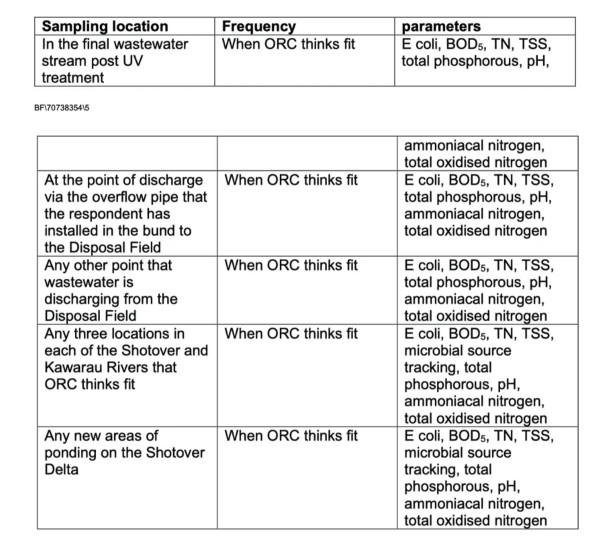
1.18 If the DAD Disposal Field is operational as at 5 May 2025, the respondent must commence measuring the volume of treated wastewater overflowing from the Disposal Field and the water level in the Disposal Field for a period of 3 months or until the DAD disposal area is no longer utilised, whichever is the later.
1.19 ‘The respondent must develop and implement a long-term solution (New Disposal System) for the disposal field by 31 December 2030:
1.19.1 Application for resource consent must be made by 31 May 2026.
1.19.2 engineering design for the New Disposal System must be completed by 31 December 2027.
1.20 The Respondent must, within 10 working days of days of the sealing of the orders, pay the Applicant $235,000 (plus GST), for costs associated with monitoring, investigating, testing, reporting and of and incidental to the application for, and filing, the Orders. This order is additional to and does not affect the Respondent’s obligations to pay monitoring costs under 1.17.
1.21 The respondent must design, develop and implement any short-term solution under Order 1.13 and long-term solution under Order 1.19 so that it does not attract any birds that are hazardous to aircraft or may endanger aircraft operations. The bird species that have been observed at the airport and which may be hazardous to aircraft are gull, oyster catcher, hawk, spur-wing plover and duck.
This article and Crux investigation was paid for by Crux subscribers.
Subscribe today - free or paid - cancel any time.






